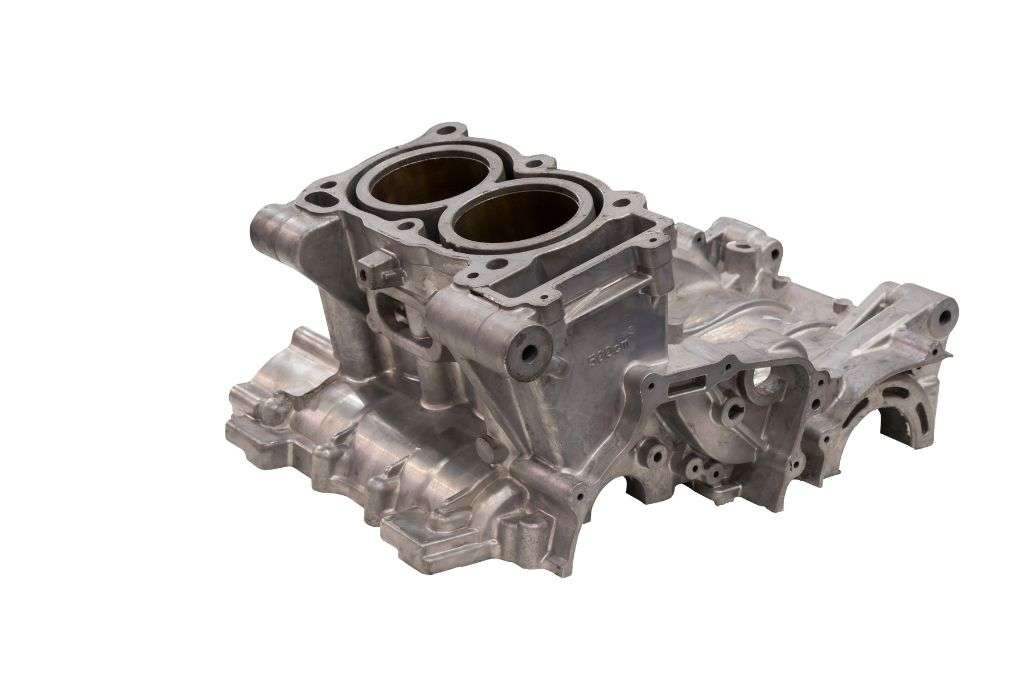
Jan 25,2024
In the puzzling world of automobile manufacturing, precision and durability are paramount. Car enthusiasts often marvel at the sleek exteriors and cutting-edge technology that make modern vehicles stand out. However, beneath the surface lies a world of engineering marvels that keep these machines running smoothly.
One such marvel is the die casting process, which plays a crucial role in shaping essential automobile components. This article delves into the world of die-casting parts, exploring what they are, why they matter, and where they're found in your vehicle.
Melted metal is injected under intense pressure into a mold cavity during die-casting. This process consistently produces intricate, highly precise pieces. Now, let's break down some die-casting basics.
Die-casting parts are ubiquitous in automobiles, supporting various vehicle systems. Here's a closer look at some of the critical components crafted through this remarkable process:
The heart of any vehicle, the engine block, is often manufactured using die casting. This is primarily due to the process's ability to create intricate and precisely structured engine parts.
Die casting is important for the smooth shifting of gears. Transmission housings, which require exceptional durability and precision, are frequently produced using this method.
Your road safety depends on reliable braking systems. Many brake components, such as calipers and master cylinder housings, are die-cast to ensure consistent quality.
Die casting creates robust wheel hub assemblies, essential for supporting the vehicle's weight and ensuring smooth rides.
These components, responsible for distributing air and fuel to the engine, are often crafted through die casting to maintain the necessary precision for optimal engine performance.
Die casting offers an efficient way to produce oil pans, which are crucial in lubricating the engine and maintaining its temperature.
Die casting provides strength and structural integrity for Various suspension parts, including control arms and steering knuckles.
Modern vehicles are equipped with a plethora of electronic components. Die casting helps manufacture efficient heat sinks, ensuring these components remain calm and functional.
Now, let's dive into some eye-opening data and statistics that underline the significance of die-casting in the automotive industry:
Die-casting parts can be crafted from various materials, including aluminum, zinc, and magnesium. Aluminum, in particular, is a popular choice due to its lightweight properties and excellent thermal conductivity.
Die casting offers cost-effective production due to its high-speed, high-volume capabilities. This efficiency translates to more affordable vehicles for consumers.
The die-casting process can achieve tight tolerances and intricate geometries, with some parts requiring tolerances as small as 0.002 inches. This level of precision is essential for maintaining the integrity of critical components.
Waste from die casting is kept to a minimum. Recyclable metal may recover up to 95% of the metal used in the process, making it a green option.
The global die-casting market continues to expand, with the automotive sector being one of its primary drivers. Recent research indicates that the industry has possibly increased by more than 6% at a compound annual growth rate (CAGR) during the ensuing years.
In the competitive world of automobile manufacturing, every detail counts. Die-castingWith their precision, durability, and cost-effectiveness, Die-casting parts are a driving force behind the excellence we expect from modern vehicles. These components silently play their part, from the engine that roars to life to the brakes that ensure safety.
As consumers, we may not always see the intricate craftsmanship that goes into our vehicles, but it's there, under the hood, behind the wheels, and within the engine block. Die casting is the unsung hero of the automotive world, shaping the parts that keep us on the road, from metal casting to assembly lines.
The die-casting process is the backbone of modern automobile manufacturing. It allows for creating exact and durable components that contribute to vehicles' overall performance, safety, and efficiency.
As the automotive industry continues to evolve, die casting will undoubtedly remain a vital part of the journey, crafting the essential parts that drive us forward. So, the next time you hit the road, remember that there's a touch of die-casting excellence ensuring your journey is smooth and reliable.